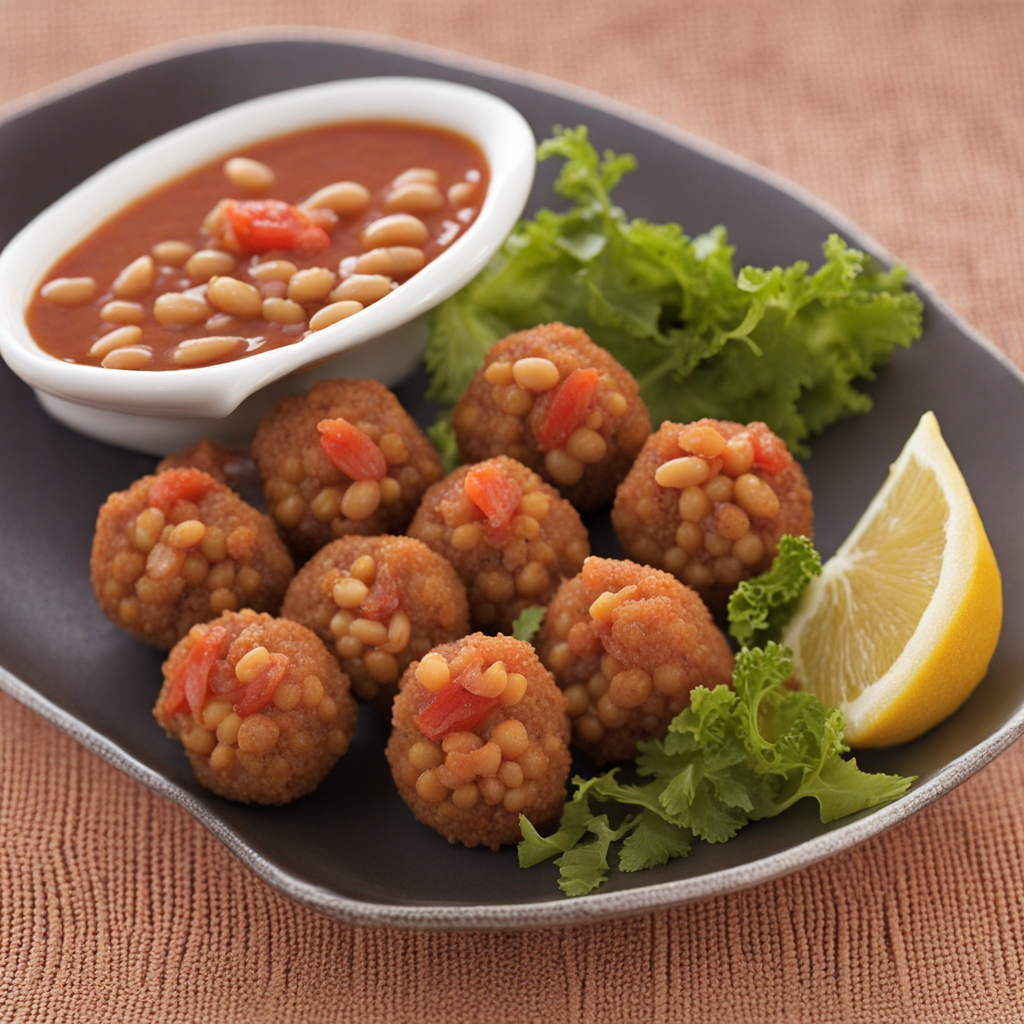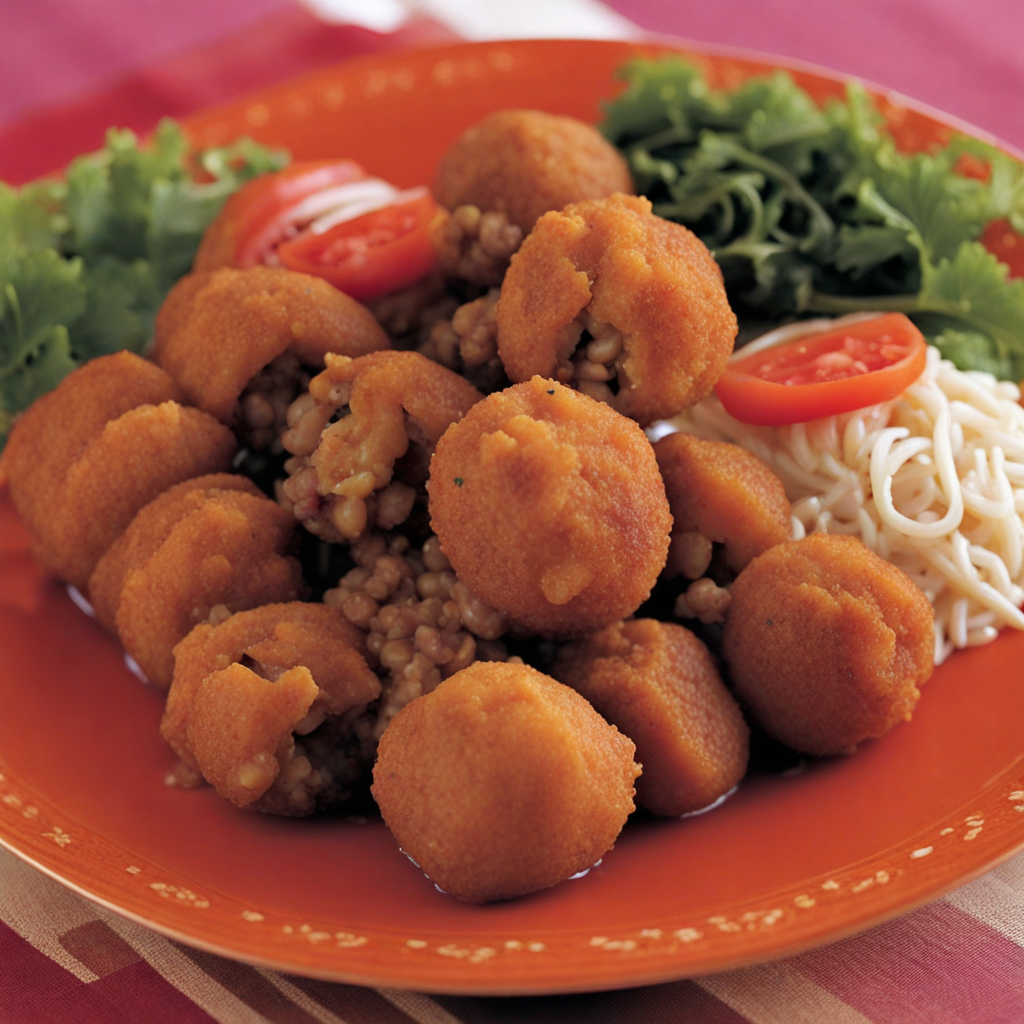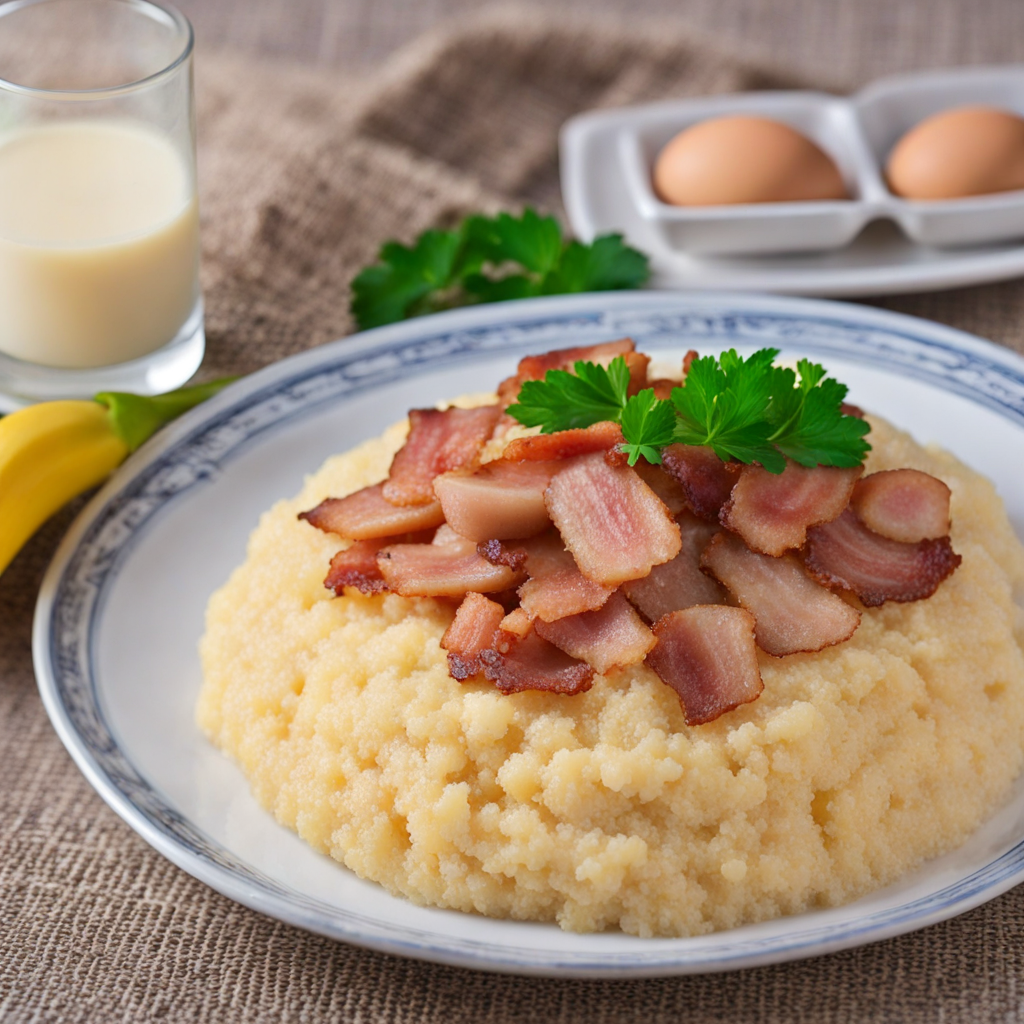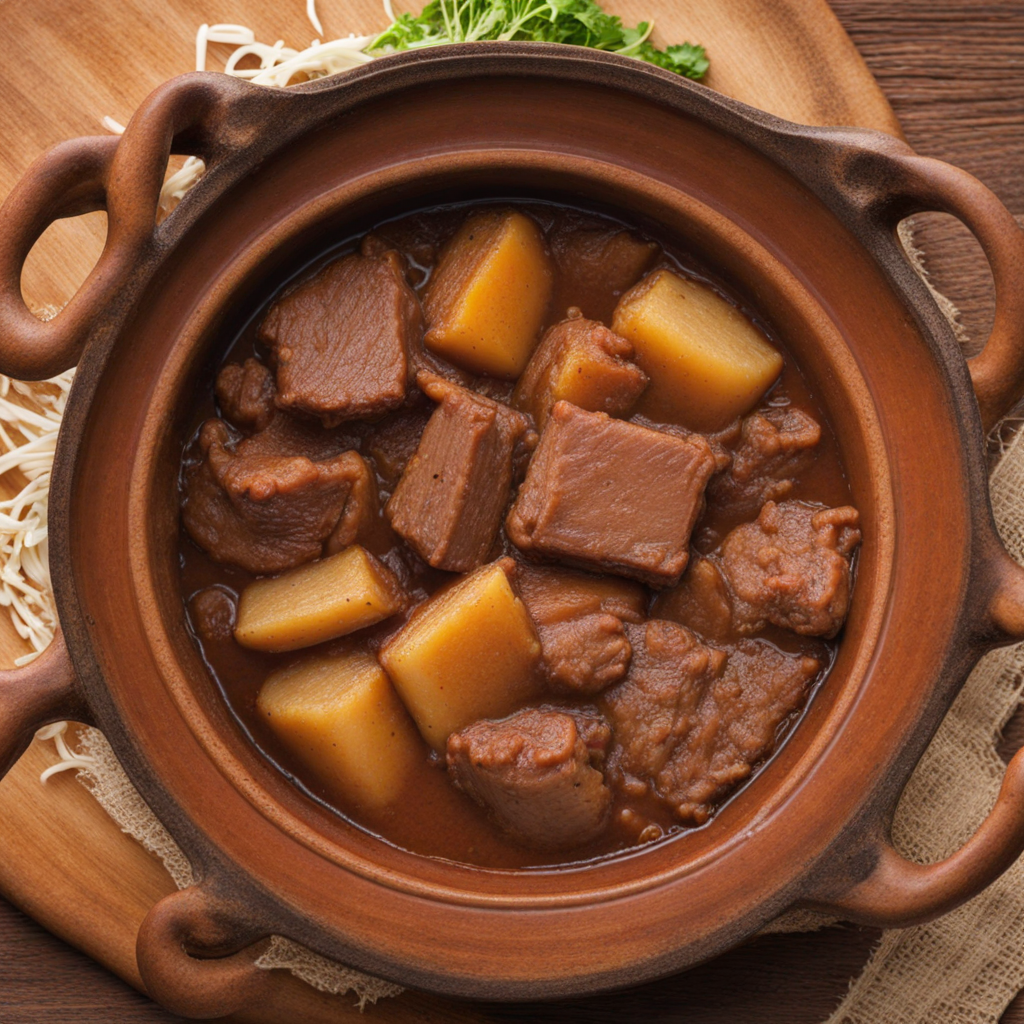Acarajé
Acarajé is a traditional Brazilian street food that boasts a unique combination of flavors and textures, originating from the African influence in Bahia. This delightful dish features a deep-fried ball made from black-eyed peas, which are soaked, peeled, and then mashed into a smooth dough. The outer crust is crispy and golden brown, while the inside remains soft and fluffy, offering a satisfying contrast in each bite. The preparation of the dough is a labor of love, often seasoned with onions and garlic, which adds depth to its flavor profile. The filling of acarajé is where the magic truly happens. Traditionally, it is stuffed with a spicy mixture of shrimp, which are often sautéed with a blend of aromatic spices, including dendê oil, a palm oil that imparts a rich, earthy flavor. The combination of the savory shrimp and the addictive crunch of the acarajé creates a mouthwatering experience that is hard to resist. Additionally, it is commonly topped with a tangy vatapá, a creamy paste made from bread, nuts, and coconut milk, further enhancing its flavor and adding a luscious creaminess that offsets the spiciness. Beyond its taste, acarajé carries cultural significance, often enjoyed as a snack or quick meal at local street vendors and food markets. It is not just food; it's an experience, often accompanied by lively music and vibrant conversations. For anyone looking to embark on a culinary adventure, the distinct flavor of acarajé, with its crispy exterior, spicy shrimp filling, and rich toppings, promises to transport your taste buds to the heart of Brazilian culture.
How It Became This Dish
Acarajé: A Culinary Journey Through Brazilian History Origins and Early History Acarajé, a delectable street food from Brazil, is a deep-fried ball made primarily of black-eyed peas, onions, and salt, traditionally filled with a spicy shrimp and a range of accompaniments. Its origins can be traced back to the Yoruba people of West Africa, particularly Nigeria, where similar dishes were prepared. The word "acarajé" derives from the Yoruba phrase "akara," meaning fried dough, and "jé," meaning to eat. This dish was brought to Brazil by enslaved Africans who were transported across the Atlantic during the transatlantic slave trade, beginning in the 16th century. The journey of acarajé from Africa to Brazil illustrates the cultural exchanges that occurred due to the forced migration of peoples. In Bahia, a state in northeastern Brazil where African culture and traditions have thrived, acarajé evolved from its West African roots, incorporating local ingredients and flavors, thereby becoming a symbol of Afro-Brazilian identity. Cultural Significance Acarajé is not merely a dish; it carries profound cultural and religious significance, particularly within the Candomblé and other Afro-Brazilian religious practices. In Candomblé, acarajé is offered to the orixás (deities) during religious ceremonies, representing a form of devotion and respect. The preparation and serving of acarajé are often performed by women known as "baianas," who dress in traditional attire, reflecting the cultural heritage and social status of Afro-Brazilian communities. The rituals surrounding acarajé are deeply intertwined with Brazilian identity. It symbolizes the resilience and creativity of Afro-Brazilian culture, as it has transformed and adapted over centuries while retaining its essence. The baianas, who sell acarajé from street stalls, are often viewed as custodians of this culinary tradition, contributing to its preservation and continued popularity. Development Over Time As Brazil evolved through the centuries, so too did acarajé. The 19th and early 20th centuries saw a surge in the popularity of this dish, particularly in Bahia, where it became a staple street food. It was often sold by women in the markets and during religious festivals, becoming an integral part of the cultural landscape. The dish's popularity spread beyond local communities, attracting attention from tourists and food enthusiasts. In the 1930s, acarajé began to gain recognition in broader Brazilian cuisine. The introduction of new ingredients, such as vatapá (a creamy paste made from bread, shrimp, coconut milk, and peanuts), added layers of flavor and complexity to the dish. The combination of acarajé with vatapá is now a hallmark of its preparation, celebrating the rich culinary heritage of Bahia. By the late 20th century, acarajé had transitioned from a simple street food to an emblem of Brazilian gastronomy. It was featured in culinary festivals and received accolades from chefs and food critics alike. This newfound recognition contributed to its evolution, with various interpretations emerging across different regions of Brazil, showcasing local adaptations while maintaining the core elements of the dish. Modern Acarajé: A Culinary Icon Today, acarajé's status as a cultural icon is firmly established. It is celebrated not only for its taste but also for its embodiment of Afro-Brazilian history and identity. In Bahia, acarajé vendors can be found in vibrant markets and street corners, serving both locals and tourists alike. The dish has also made its way into upscale restaurants, where chefs experiment with innovative presentations and fusion flavors, further broadening its appeal. Despite its commercialization, the essence of acarajé remains rooted in tradition. Many vendors adhere to age-old recipes and techniques, using traditional wooden mortars to grind the black-eyed peas and maintaining the authenticity of the dish. The ritualistic aspects of its preparation, particularly the spiritual offerings made to the orixás, continue to hold significance for many practitioners of Candomblé. Challenges and Cultural Preservation While acarajé enjoys popularity, it faces challenges in the modern culinary landscape. The rapid urbanization and commercialization of street food can sometimes dilute traditional practices. Additionally, the ongoing struggle for recognition of Afro-Brazilian culture necessitates a commitment to preserving the culinary traditions associated with acarajé. Advocacy for the rights and recognition of the baianas is crucial, as they are not only food vendors but also cultural ambassadors. Efforts to promote the cultural heritage of acarajé have gained momentum, with organizations working to support the baianas and ensure the preservation of their culinary practices. These initiatives emphasize the importance of education, cultural exchange, and community support in safeguarding the future of this cherished dish. Conclusion Acarajé is more than just a beloved Brazilian street food; it is a powerful symbol of history, culture, and identity. Its journey from West Africa to Brazil reflects the complexities of migration, adaptation, and resilience. As it continues to evolve, acarajé serves as a reminder of the rich tapestry of influences that shape Brazilian cuisine and culture. Whether enjoyed at a bustling market in Bahia or reimagined in a contemporary restaurant, acarajé stands as a testament to the enduring legacy of Afro-Brazilian traditions and the vibrant spirit of Brazil itself. In a world increasingly focused on authenticity and heritage, acarajé invites us to savor not only its flavors but also the stories of the people and cultures that have shaped it over time.
You may like
Discover local flavors from Brazil







